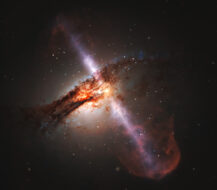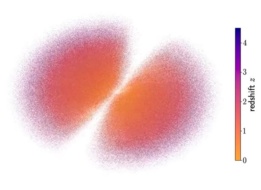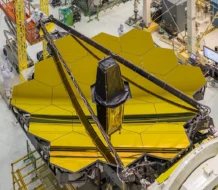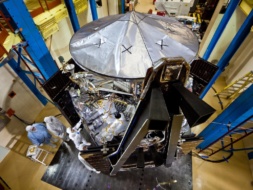Starquakes. Like earthquakes, but in a hot, burning ball of gas, somehow.
The idea that seemingly random bursts and ripples of energy from deep within stars has been posed in the past to explain certain randomly occurring phenomena, but in the absence of any observational evidence, these starquakes have remained theory. Now, though, their existence is looking a bit more likely.
A pair of researchers in Japan have found evidence for the existence of these starquakes as a potential source of fast radio bursts (FRBs), a mysterious, energetic phenomenon that astronomers have observed often and found difficult to explain. Their results were published yesterday in the Monthly Notices of the Royal Astronomical Society.
Fast and bright: In 2007, astronomers poring over archival data from the Murriyang radio telescope came across an observation that stuck out from the rest: a sudden, short-lived flash of radio emissions coming from a star, releasing tons of energy into space.
Since then, astronomers have identified this phenomenon, an FRB, several times, often emitting as much energy in a fraction of a second as our Sun does in a full year. Usually, they’re isolated incidents, but a few recurring FRBs have been identified in neutron stars, which are incredibly dense and energetic.
Even when they recur, though, FRBs strike at random times and seem to come from nowhere. Randomness is not a satisfying explanation for astronomers, and since their discovery 6 years ago, the search for an underlying cause has been underway.
Probing for a source: Two main theories have been proposed to explain FRBs. One is the elusive starquake; the other is that they are major solar flares.
“It was theoretically considered that the surface of a magnetar could be experiencing a starquake, an energy release similar to earthquakes on Earth,” said Tomonori Totani, lead author on the paper, in a release. “Recent observational advances have led to the detection of thousands more FRBs, so we took the opportunity to compare the now large statistical data sets available for FRBs with data from earthquakes and solar flares, to explore possible similarities.”
The research team compared observational data from more than 7000 FRBs and compared them to earthquakes. They found several things in common:
- High probability of aftershocks
- Aftershock probability decreases with time
- Aftershock rate is constant even if the rate of quakes vary
- No correlation between the energy of a main shock and the aftershock
“The interior of a neutron star is the densest place in the universe, comparable to that of the interior of an atomic nucleus,” Totani said. “Starquakes in neutron stars have opened up the possibility of gaining new insights into very high-density matter and the fundamental laws of nuclear physics.”




